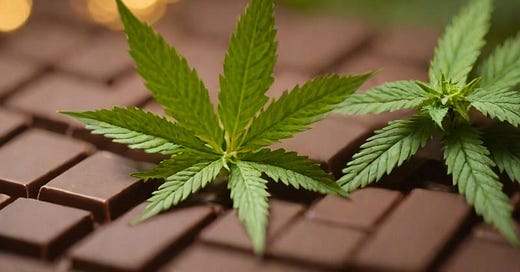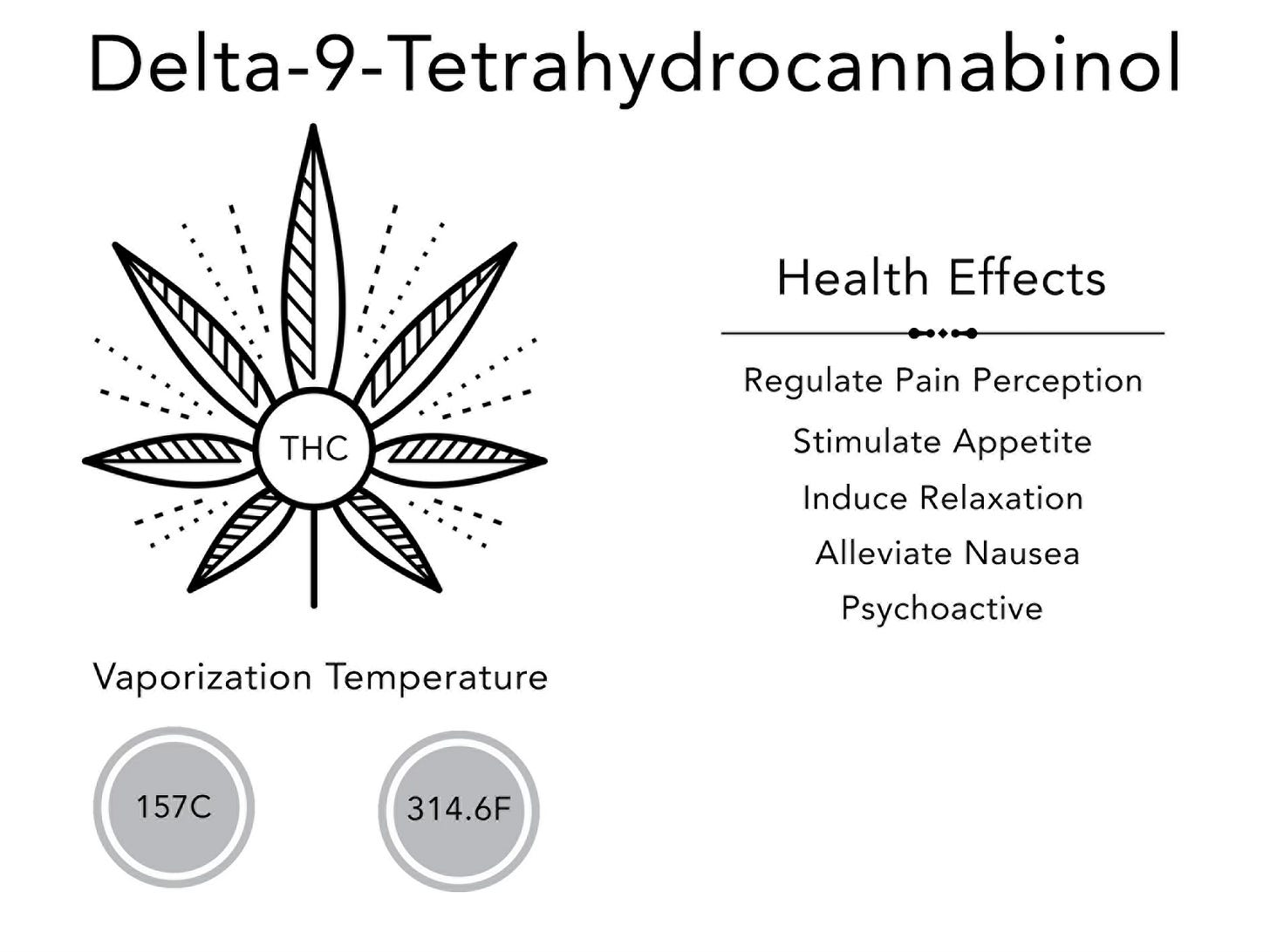I’m starting a new series called Cannabinoid of the Month. This doesn’t mean I’m completely done with my Terpene of the Month series. I’m just spicing up my content a bit to cover another just as important topic… Cannabinoids, starting with Delta-9-Tetrahydrocannabinol (THC)!
Throughout history, cannabis has been used for various purposes, including medicinal, spiritual, and recreational uses, dating back thousands of years across different cultures and civilizations. Among the numerous cannabinoids found in the cannabis plant, THC stands out as one of the most well-known and researched.
In 1964, Israeli chemist Dr. Raphael Mechoulam was the first to successfully isolate and identify THC, opening up new avenues for understanding its pharmacological properties and potential therapeutic applications.
THC engages with the body's endocannabinoid system (ECS) by binding to two main types of receptors: CB1 and CB2. These receptors are abundant in the brain, as well as throughout the central and peripheral nervous systems.
The ECS, comprising these receptors along with endocannabinoids (naturally occurring compounds within the body that interact with the ECS), plays a crucial role in maintaining homeostasis by regulating a wide range of physiological functions such as eating, anxiety levels, learning and memory, reproductive processes, metabolism, and growth and development. It achieves this through various actions that impact synaptic communication among neurons in the nervous system.
The brain identifies THC because its chemical structure closely resembles anandamide, a natural intercellular communication chemical found in various animal tissues, including humans. (Anandamide is also found in chocolate. The name 'anandamide' is taken from the Sanskrit word ananda, which means "joy, bliss, delight", plus amide.) This similarity enables THC to bind to CB1 and CB2 receptors, mimicking anandamide's actions within the body's ECS and altering normal brain communication.
While THC is often celebrated for its psychoactive effects, it's important to acknowledge THC's ability to regulate pain perception, induce relaxation, stimulate appetite, and alleviate nausea making it a valuable therapeutic agent for many individuals.
A study published in Addiction Biology in September of 2023 investigated the acute effects of THC among people receiving methadone therapy for opioid use disorder (OUD). The results of the study indicated that, in terms of self-reported pain sensitivity measures rather than experimental ones, 10 mg of THC offered more significant relief compared to 20 mg of THC. Importantly, there was no substantial evidence suggesting abuse potential and any dose-dependent cognitive adverse effects were inconsistent. More studies like this need to be conducted but this is a great start.
In December of 2023, Scientific Reports published a study that aimed to investigate the neurobiological mechanisms underlying the appetite-stimulatory properties of cannabis via vapour inhalation in rats. Analysis of meal patterns revealed that cannabis vapour exposure promoted increased meal frequency and reduced meal size throughout the evaluation period, suggesting that inhaled cannabis may provoke motivational components of feeding.
A randomized, double-blinded, placebo-controlled study published in the International Journal of Women’s Health in July of 2023 examined the effects of THC: CBD (1:1) oil in reducing chemotherapy-induced nausea and vomiting (CINV) in gynecologic cancer patients. While dizziness and sedation were the major reported side effects the study concluded that cannabinoid extract (THC: CBD) was an appropriate therapy to reduce CINV in patients with gynecologic cancer receiving chemotherapy.
While there are many advantages to consuming THC you should always start low and go slow.
If you’re looking for medicinal cultivars on the Australian market that are LOW in THC**…
Green Shepherd’s Queen Nandi (Total THC 13%)
BOB’s BOB 14 (Limited Release) (Total THC 14%)
Canntic’s Flower Number Six ANIKA (Total THC 15%)
Green Shepherd’s CO-H16 (California Orange) (Total THC 16%)
Australian Natural’s Mariposa (Total THC 16%)
Kind’s Azure 17:1 (Total THC 17%)
Promethean BioPharma’s Super Silver Haze (Total THC 17%)
Beacon’s Critical Super Silver Haze (Total THC 18%)
Cannatrek’s T18 Jasper (Total THC 18%)
Canntic’s Flower Number Five YUZUKI (Total THC 18%)
**This data was provided by Catalyst by honahlee. The honahlee team requires all product suppliers to verify their cannabinoid percentages beyond the suppliers’ brochure or health professional marketing claims via a Certificate of Analysis (COA) with measured cannabinoid value for the products to be searchable.
This substack aims to provide anecdotal information from my personal experiences in hopes it will lead to meaningful conversations between my readers and their healthcare professionals about medicinal cannabis.
I have no formal training in medicine or science. This article does not constitute medical advice.






Good to see more secrets about the plant for the community. It has surprised how many different cannabinoids they have found in cannabis over the years. Can't wait to see the CBN profile.